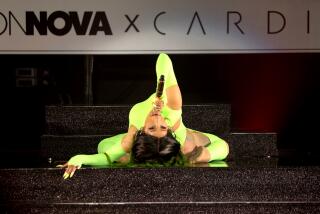Warner Music turns former Ford assembly plant into Arts District music factory
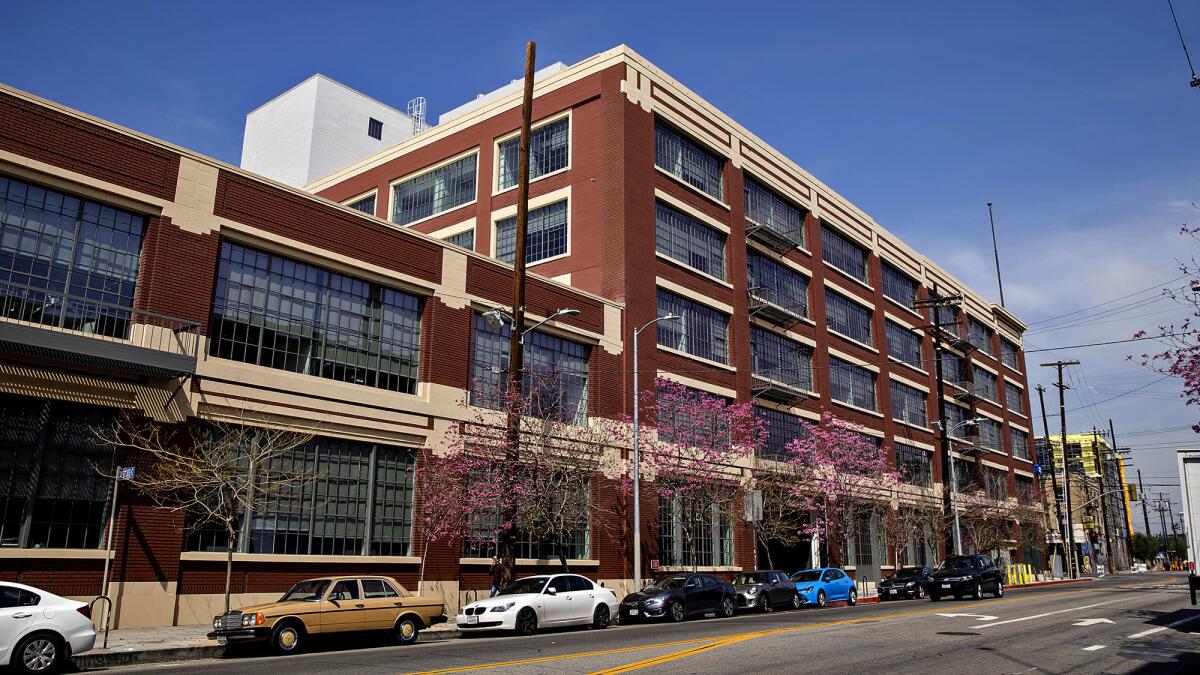
Employees of Warner Music Group Inc. for the last several weeks have been toiling in the same red brick building where men who could have been their great-grandfathers put together shiny black automobiles.
Their new workstations line the route of an assembly line built more than a century ago to construct Model Ts, the first mass-produced cars that put motoring in reach of middle-class families.
Sun streaming in from the restored skylights meant to illuminate the nooks and crannies of engine wells is sometimes so bright that record company employees wear dark glasses while tapping at their computer keyboards.
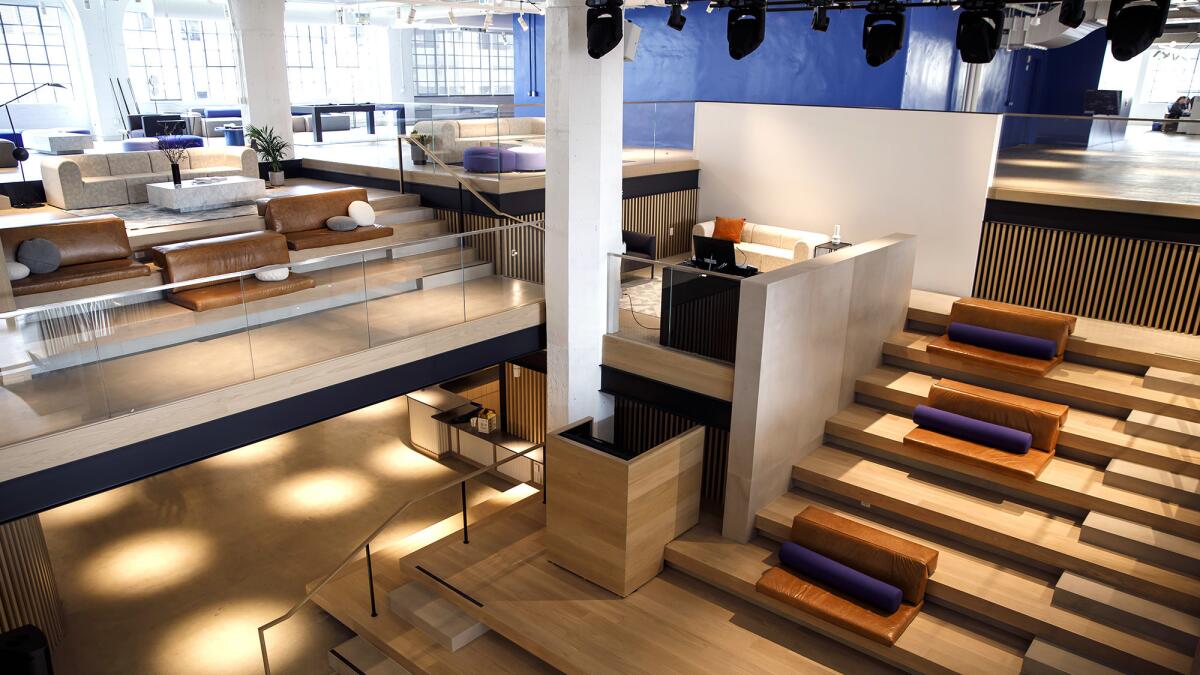
Of course, it’s been nearly a century since Tin Lizzies rolled off the line in the neighborhood east of downtown that has evolved over the last several years into the Arts District — a place that has drawn creative companies in search of an industrial vibe and unconventional office space.
Much of that change has been in the northern reaches of the district near Little Tokyo, where more than 1,000 apartments have been built and chic shops and restaurants flourish near a former Santa Fe railroad freight depot that has been converted to architecture school SCI-Arc.
Now, with the arrival of Warner Music — which is not just leasing but recently bought its new home — the portion of the Arts District south of 7th Street is seeing a shift in occupants from garment manufacturers, produce distributors and wholesalers to media companies, trendy retailers and upmarket restaurants that people drive across town to visit.
The neighborhood has even attracted a SoHo House — an exclusive international club operator with locations in West Hollywood and Malibu — that is being built out just south of the Ford Factory in a tall brick warehouse erected in 1916.
“The neighborhood has changed dramatically,” said Ran Zimon, who opened the Bread Lounge cafe and bakery in 2010 across Santa Fe Avenue from the Ford Factory and counts hundreds of customers daily. “A lot more people live and work in the area. Before, it was industrial with basically nothing here.”
The fast redevelopment of the area is exemplified not only by the arrival of Warner Music but by a decision by Los Angeles developer Lowe to build a nine-story office building at 2130 Violet St., half a block from the Ford Factory and near the office campus of high-speed transportation technology company Virgin Hyperloop One.
It’s one of the first ground-up offices to be built anywhere in the Arts District since the neighborhood began its revival about a decade ago.
“It’s for people looking for something different than a typical high-rise,” said Lowe executive Tom Wulf, who hopes to rent it to a single tenant.
But while the pace of growth in the southern Arts District has been picking up in recent years, the area has by no means lost its industrial grit. Big rigs navigate the sometimes-narrow streets at all hours serving the remaining manufacturers and distributors that warehouse food, toys and a host of other goods.
Still, Warner Music made the leap and consolidated its 650 employees, formerly spread among multiple outposts in Burbank and West Hollywood, into the district.
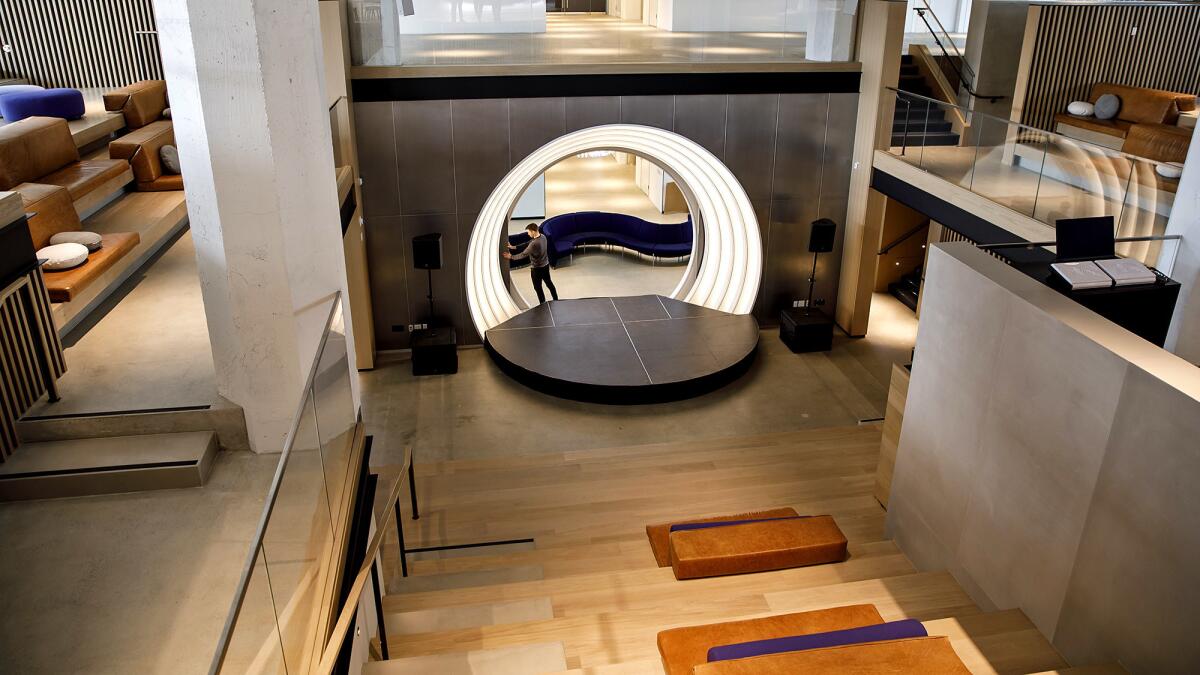
“We said: ‘Hey, guys, why not the Arts District? Why not downtown?’” said Jonah Sonnenborn, head of real estate for Access Industries, the holding company controlled by billionaire investor Leonard Blavatnik that acquired Warner Music in 2011.
Sonnenborn said he noticed similarities between the Arts District and reemerging neighborhoods of Manhattan, such as the Meatpacking District, where property values have shot up in recent decades. In choosing the Ford Factory, Warner Music passed on sites in Santa Monica, Hollywood and Playa Vista.
“When you walk around the Arts District you get the same hip, cool vibe where people want to live, work and play,” he said. “Warner wanted to take a leadership position in this neighborhood.”
Warner Music moved in as a tenant last month, and its parent company Access recently exercised its option to buy the Ford Factory and its new garage for $195 million, according to property experts who know about the sale.
Sonnenborn wouldn’t discuss the price but confirmed that the New York company bought the former auto plant from San Francisco developer Shorenstein, which went all out renovating the old manufacturing plant.
The complex is home to several labels: Warner Bros. Records, Warner/Chappell, Atlantic, Elektra, Rhino, WEA, and ADA. Within the building they retain separate identities in offices designed by New York architecture firm Rockwell Group that showcase the history and styles of the different labels.
Atlantic’s offices, for example, are perhaps the most elegant with subdued lighting and plush furniture. On a recent morning, the crescendo of the Spinners’ 1973 hit “Could It Be I’m Falling in Love” filled the room with crisp sound as visitors entered.
The label offices surround Center Stage, a two-tier, 250-seat live performance space for showcasing company artists. There are soundproof “writers’ rooms” complete with guitars and pianos where artists can create music, as well as a commissary with Warner-blue chairs featuring the company logo, which was also recently painted on a large old water tower on the roof.
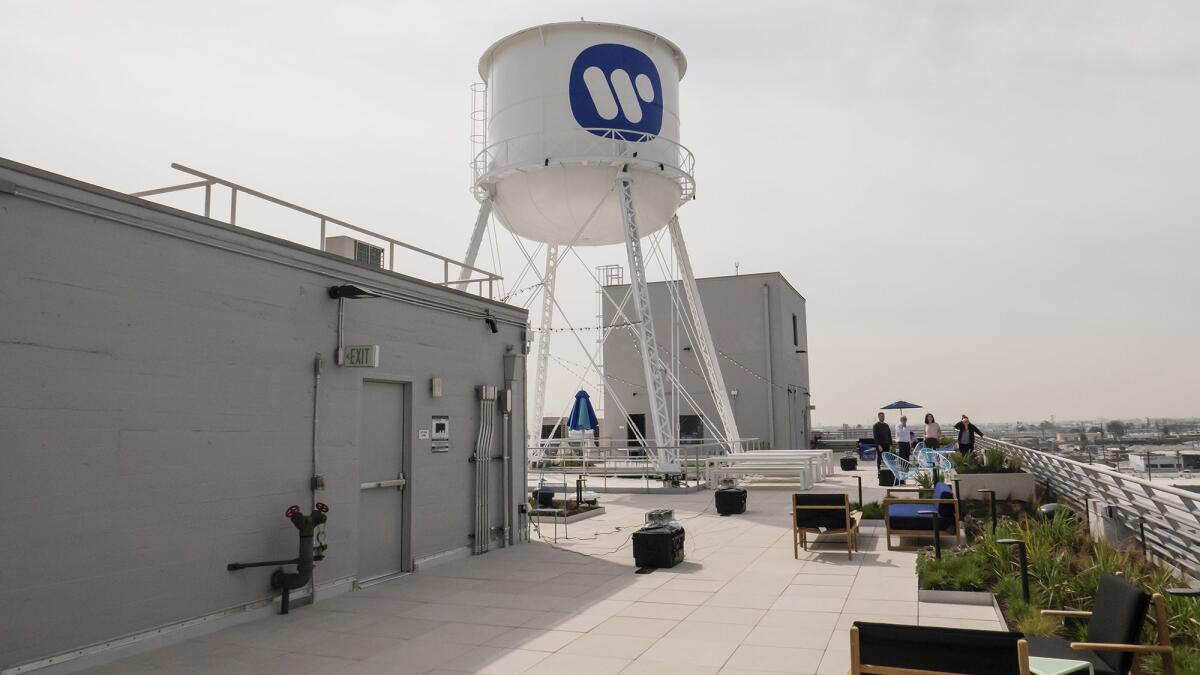
Wulf, of Lowe, said the southern Arts District office market has been “a little more edgy” and “under the radar” compared with the northern portion, where online coupon firm Honey, music-streaming giant Spotify and meal replacement company Soylent Foods Co. have recently staked out new digs — and co-working colossus WeWork may soon take over a former Maxwell House Coffee warehouse.
But to the real estate development company that represented an opportunity to carve out a niche by erecting a new building instead of renovating an old one. Lowe bought a parcel last occupied by a metal recycler as part of a $60-million investment to put up a tower with 100,000 square feet of offices the developer hopes will appeal to creative businesses.
The design by architecture firm Ware Malcomb is meant to evoke the industrial character of the neighborhood with such modern touches as ground-floor shops, a restaurant, built-in parking and a rooftop deck. Work on the building is set to begin in September and be completed in 2021, he said.
Real estate broker Mike Condon Jr. of Cushman & Wakefield said the growing appeal of the Arts District is driving up rents, which can be well above the price of conventional office towers in the central downtown market of Bunker Hill and in the financial district.
Average asking rents in the Arts District jumped from $4.47 per square foot per month to $5.35 a square foot between the fourth quarters of 2017 and 2018. By contrast, average fourth-quarter asking rent in 2018 was $3.52 a square foot in the central business district, where the vacancy rate is considered high at 18%.
The vacancy is actually higher in the Arts District, but it’s a much smaller market where even a single deal can drastically change the percentage of space that’s occupied. And with all the companies moving into the district, that’s reflected in the numbers; the vacancy rate fell from 83% to 21% over the course of last year.
Condon said Warner finally opening up shop could further turbocharge things. “Now we’ll really get to see what the market is made of,” he said.
The district has a certain je ne sais quoi at the moment that especially appeals to younger members of the workforce, he said.
“It’s gritty, it’s original, it’s authentic,” he said. “And you also see trendsetting boys and girls almost get run over taking Instagram photos in the middle of the street.”
More to Read
Inside the business of entertainment
The Wide Shot brings you news, analysis and insights on everything from streaming wars to production — and what it all means for the future.
You may occasionally receive promotional content from the Los Angeles Times.

